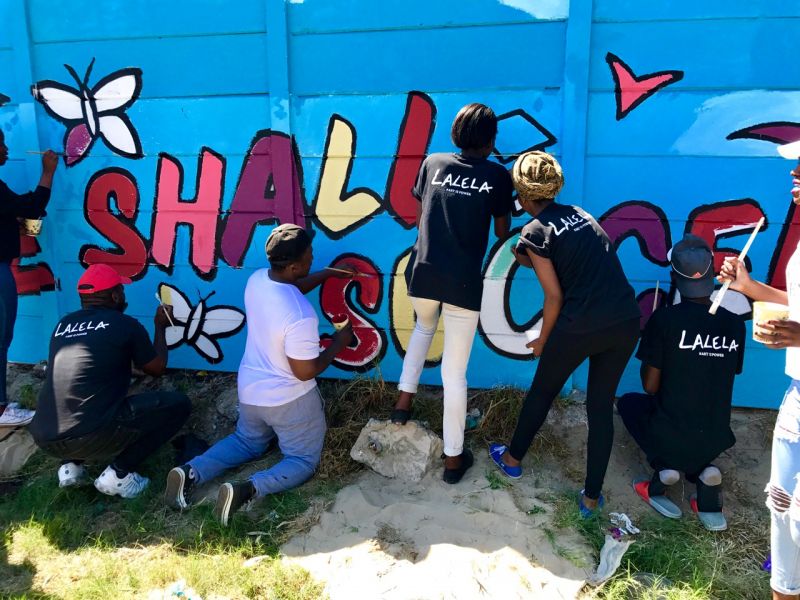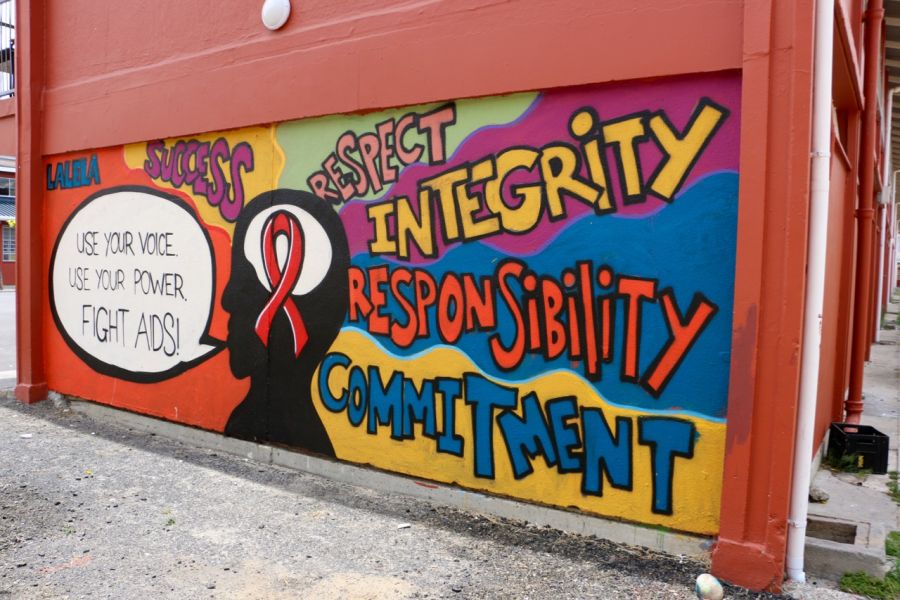Lalela: the art of building the future

What’s the spark that ignites change? For Lalela, a South African NGO, it is art and creativity.
In the townships of Cape Town, where children and young people grow up in at-risk environments, offering them a way out of the vicious cycle of poverty, lack of opportunity and violence is no easy task. Yet, in 2010 something changed: that year, for the first time, an art programme opened its doors to the kids of the periphery, showing in time that children who are free to create become adults who are capable of making decisions, creating opportunities and building a better future for themselves. It all starts with the prophetic gaze of people who see potential where others see problems.
“The South African school curriculum focuses heavily on maths, literature and literacy. As a result, the creative development of kids is not addressed” – explains Firdous Hendricks, lead facilitator in charge of curriculum programming at Lalela.
Lalela’s aim is to spark creative thinking and the capacity to generate change and innovation by exposing students to art through tuition-free weekly workshops extending from the first to the final year of school.
“We believe that awakening their creativity is extremely important. We see it as a way of tackling unemployment, which is a big problem in our country: the only way these kids have of finding new opportunities is if they actually create their own”.
That is a process that benefits the entire community: when a student starts a career as an entrepreneur, he or she generates jobs and wealth for many. With her lively tone of voice and an enthusiasm that crosses continents, Firdous explains to me via Skype that the benefits of art are countless, as studies have shown: young people who engage in the arts are twice as likely to finish school and graduate from college. That is because art education helps develop critical thinking and problem-solving skills, while also encouraging grit and perseverance.
“You know, to complete a piece of art from start to finish, it takes a lot of work. So to be able to persevere, to begin something and then complete it, I think it develops the students’ work ethic”, she tells me, “and it’s also a huge personal risk to take responsibility for what you create, to express your point of view on things: encouraging students to do it empowers them”.
That way, Lalela students grow up to actually make a difference in their communities. Encouraged by a project that allows them to beautify public spaces with their art, kids learn to own those spaces and begin to feel their responsibility towards the community. In time, they become actively engaged in bettering the environment they live in – they become active citizens – and many of them emerge as local leaders.
“That’s a big thing for us: our mission is to raise leaders, people to look up to. In a lot of those communities the people that are looked up to by young people are gangsters, and we want to change that. We want kids to look up to people who are making positive differences in the community”, Firdous explains.
As I listen to her, I can’t help but marvel at the innovative force of this project, and I marvel even more at the beauty of the colours and compositions created by the students, which are visible for everyone to admire on the project website. When they first begin the course, Firdous tells me, the majority of them think they are incapable of making a mark on a page, so the surprise is huge when they realise what they are actually capable of creating.

I can only imagine the extraordinary meaning that such a discovery can have for their lives and their self-confidence.
Among the many curricula offered by Lalela, the one that immediately caught my attention has the magical name of ‘Heart Map’. South Africa is a country in which people of different ethnic backgrounds live side by side, and racism is still very much present. The prospect of peaceful cohabitation is often threatened by what each person is taught to believe about the other.
The idea of the Heart Map curriculum is simple yet revolutionary: in classes made up of students of different ethnic backgrounds, each student is paired with another one from a different community. The two go through a mutual interview process and gradually get to know each other on a deep level. At the end, each one is capable of ‘mapping the other’s heart’, condensing his or her story in a piece of art in which their background, fears, challenges and aspirations are represented – a very powerful gift, both for the giver and the receiver. The curriculum thus encourages students to go beyond their initial perception of the other, which is often superficial.
As Firdous’s students themselves often say: “You see people [of other communities] walking around, and maybe you interact with them, maybe you don’t, but you don’t really know what they’re going through until you actually ask them real questions in a real conversation”. Although the children don’t say much, the real reward is witnessing the change in their behaviour. Firdous tells me about Luqmaan and Maihlome from Hout Bay, an area of Cape Town where two culturally different communities live within walking distance of each other. Halfway through the curriculum, the two kids started creating a strong bond: “One day I saw they were sitting together watching videos, laughing and joking. They were bonding”, she says. “They had just gone through the interview phase, and they had become friends”. She adds that not all pairs who work together become best friends, but they all grow up to be tolerant and understanding.
When I ask her what consequences she thinks the project will have for the future of those communities, I’m certainly not prepared for what she’s about to tell me: the successful reputation of the ‘Heart Maps’ has reached the South African Department of Education, and the curriculum is in the process of being introduced in schools all over the country. After a pilot phase that showed very positive outcomes, the project will be extended and rolled out to schools nationwide over a three-year period. Despite the slow internet connection, I catch the amazed and grateful tone in my interviewee’s voice as she tells me all this.
Her story is the journey of a person who decided to put her talent at the service of the development of her people. What came out of it probably went beyond her expectations.
“In the schools we work with, we want teachers to see the value of investing in students” – she points out. That is the great lesson of art: anybody can create. Not all Lalela students will become scientists, and only some of them will thrive academically, but what they all share is the potential to express their own truth, to become who they are.
